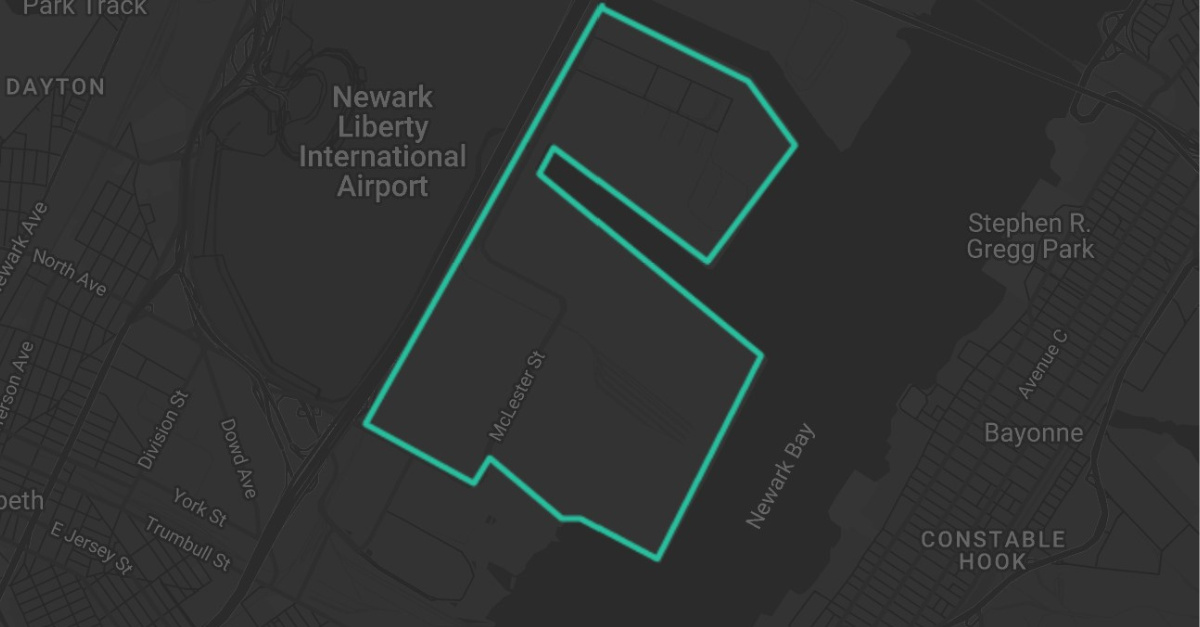Imagine this scenario: You’re a construction firm manager overseeing numerous sites. You get a phone notification that a critical, $50,000 excavator has started moving at 3AM. Within minutes, you direct security to the area, where they find thieves attempting to steal the equipment. The rapid response enabled you to avoid a major asset loss and expensive downtime.
This story shows the immense value real-time alerts provide for modern asset tracking systems. Read on to learn more about the types of alerts available, key benefits, use cases, and top features to look for.
What Types of Real-Time Alerts Are There?

Today’s GPS asset trackers and management systems provide numerous options for real-time notifications and alerts:
Location-Based Alerts – Geofences, stand as a cornerstone in the realm of asset tracking, offering a blend of simplicity and power in monitoring asset movements. These virtual boundaries, set up in the digital map of your tracking system, act as invisible fences that trigger alerts when crossed by your assets. Know immediately when equipment leaves a job site or fleet vehicles deviate from routes.
Sensor Threshold Alerts – Sensor threshold alerts in asset tracking systems are critical for maintaining the integrity and operational efficiency of various assets. These alerts are triggered when readings from sensors like temperature, light, motion, or pressure exceed predefined limits. For instance, receiving an alert for excessive engine heat can be pivotal in preventing breakdowns and costly repairs. This proactive approach ensures that assets remain in optimal condition, reducing the risk of unexpected failures and extending their lifespan.
Tampering Alerts – Tampering alerts in asset tracking systems are essential for safeguarding assets against unauthorized use or theft. These alerts are activated by motion sensors, instantly notifying you if there’s any unexpected movement or tampering of your equipment. This feature is particularly crucial in preventing theft and ensuring that equipment is operated only under authorized conditions, thereby enhancing the security and integrity of your assets.
Maintenance Alerts – Maintenance alerts in asset tracking systems play a pivotal role in optimizing asset longevity and performance. They systematically notify you based on mileage, hour meter readings, or pre-set schedules, prompting timely preventative maintenance. This proactive approach significantly reduces downtime and associated costs, ensuring your assets are always in prime operating condition.
Custom Alerts – Custom alerts in asset tracking systems offer the flexibility to tailor notifications according to your unique assets and operational needs. This feature allows you to get creative and establish bespoke alert rules, providing an additional layer of protection and oversight tailored specifically to your business’s requirements. It’s a powerful tool that adapts to the diverse and dynamic nature of asset management.
Benefits of Real-Time Alerts and Notifications
Real-time alert capabilities confer many advantages:
- Rapid Response – The ability to receive and act on issues within minutes through real-time alert capabilities is a significant advantage, especially in critical situations like theft or when maximizing asset uptime. This immediacy ensures that potential problems are addressed swiftly, preventing them from escalating and ensuring the continuous operation of assets.
- Prevent Losses – Real-time alerts are instrumental in preventing losses, enabling you to respond swiftly before theft or preventable damage occurs. They provide immediate knowledge if assets deviate from expected parameters or locations, ensuring prompt intervention and safeguarding your valuable assets.
- Improved Efficiency – The automation of oversight tasks provided by real-time alerts significantly improves efficiency. It eliminates the need for continual manual checks on assets, especially those spread across dispersed sites, streamlining operations and saving valuable time and resources.
- Reduced Costs – Real-time alerts play a crucial role in reducing costs by preventing losses and minimizing downtime, which in turn saves on expensive replacements or lost productivity. Additionally, this proactive approach contributes to extending the lifespan of your assets, further enhancing cost-efficiency.
- Customizable – The customizable nature of real-time alerts allows you to tailor them to fit the specific requirements of your assets and operational needs as they evolve. For instance, you can create tailored cargo temperature alerts for a food transport fleet, ensuring that each alert is relevant and effective for its intended purpose.
- Peace of Mind – Real-time alerts offer invaluable peace of mind by providing immediate confirmation that assets are where they should be and operating as expected. This constant reassurance ensures that you are always in the loop regarding the status and safety of your assets.
Real-time alert capabilities are invaluable across many industries and use cases:
- Construction – Prevent theft of expensive equipment using geofence and motion alerts play a critical role in preventing theft of expensive equipment. For instance, if a piece of equipment like a backhoe or crane moves outside a designated geofence, an immediate alert can be triggered, enabling quick action. Additionally, these systems can be set to notify if portable generators or other crucial machinery stop running at remote sites, ensuring uninterrupted operation and minimizing downtime. This proactive monitoring is essential in an industry where equipment is often stationed at unsecured, remote locations.
- Food Transportation – Real-time alert capabilities are crucial for ensuring food safety. Continuous monitoring of refrigerated trailer temperatures during transport is vital. These alerts help maintain the required temperature, ensuring that perishable items like produce, dairy, and meats are transported under optimal conditions. Immediate notifications in case of temperature deviations allow for swift corrective actions, preserving the quality and safety of the food products throughout their journey.
- Local Government – Alerts are particularly useful in managing essential services like snow removal. Alerts can be configured to monitor snowplows, ensuring that plowing operations commence on time following snowstorms. This capability is key to maintaining timely and efficient city operations, especially in regions where prompt snow clearance is critical for public safety and mobility. By receiving instant updates on the status and activity of snowplows, local governments can better coordinate their responses to winter weather events, ensuring roads are cleared quickly and effectively.
- Fleet Management – Real-time alerts offer significant advantages for route compliance and vehicle safety. By establishing well-defined geofences around authorized routes, fleet managers can enforce safety protocols and prevent unauthorized vehicle use. This feature ensures that vehicles adhere to predetermined paths, enhancing operational security and efficiency. If a vehicle deviates from its authorized route, an alert is instantly triggered, allowing fleet managers to take immediate corrective action. This proactive approach not only bolsters safety but also contributes to the optimal use of fleet resources.
Key Features to Look For
To maximize the value of your real-time alerts, look for these key capabilities:
- Instant Push Notifications – Alerts should reach you ASAP via SMS, email, or app notifications.
- Alert History Log – Review a timeline of all alerts received, even if you don’t immediately action them.
- Flexible Parameters – Easily adjust parameters like geofence boundaries or temperature thresholds on the fly.
- Integration – The best systems integrate with other software like work order or dispatch systems to streamline responses.
- Reports – Generate reports on asset status and alerts received over custom time periods. Identify issues and patterns.

Real-Time Insight Brings Peace of Mind
Real-time alerts transform asset management. With instant notifications, you can respond immediately when the unexpected occurs and avoid unnecessary costs and headaches.
Over time, you’ll learn to use alerts proactively to prevent losses before they ever happen. Customization ensures alerts adapt as your needs evolve.
If you’re still tracking assets manually, it’s time to step up to automated, real-time oversight. Contact us today to learn more about our alert capabilities or to schedule a demo. We’ll show you how to utilize alerts to maximize uptime, lifecycle, and return on every asset.

